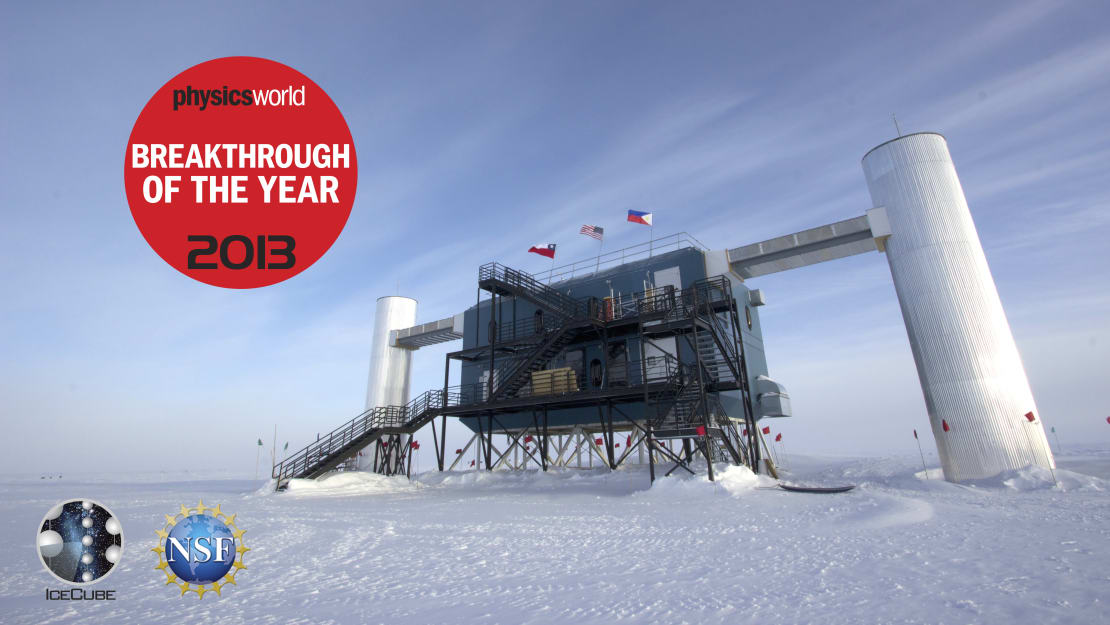IceCube results show strong evidence for an astrophysical neutrino flux
In November 2013, the IceCube Collaboration announced the discovery of 26 astrophysical neutrinos in addition to Bert and Ernie—significantly more than background expectations. With energies between 30 and 1,200 TeV, these neutrinos were the most energetic ever observed. And though their flavors, directions, and energies were inconsistent with what we would expect from neutrinos produced in Earth’s atmosphere, they did match predictions for neutrinos of extraterrestrial origin. Together, these detections showed strong evidence for an astrophysical neutrino flux. The results were published in Science.
This discovery heralded the beginning of the exploration of the universe with neutrino telescopes and would later be named “Breakthrough of the Year” by Physics World.
